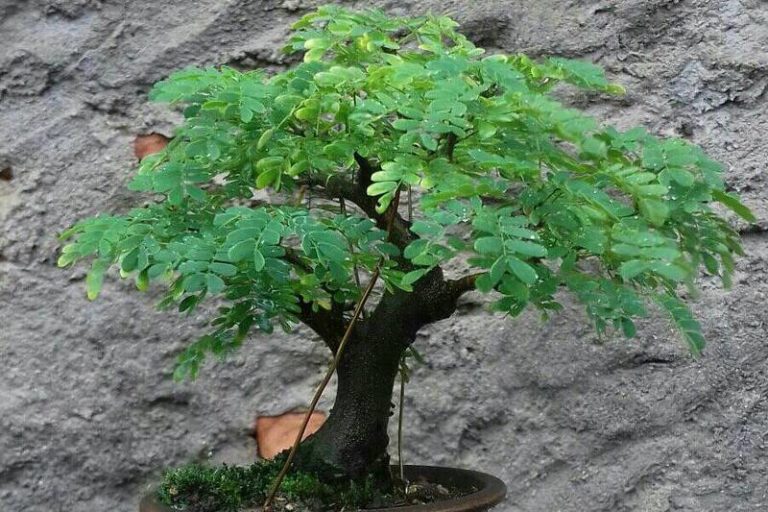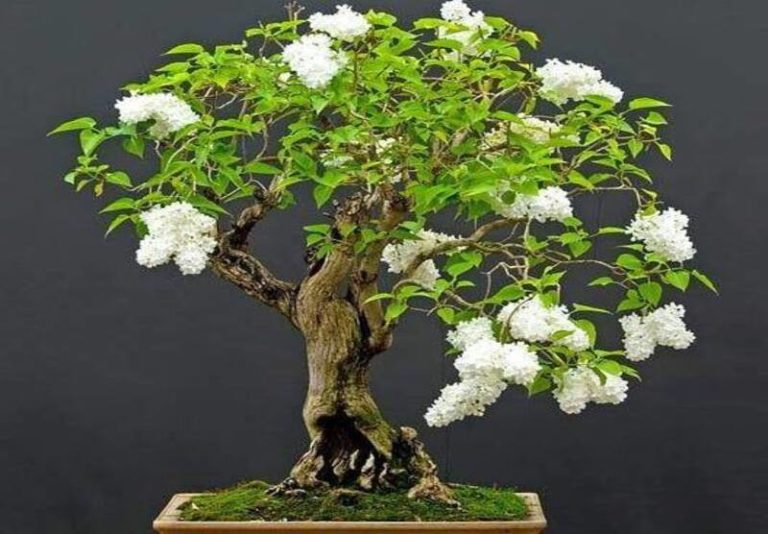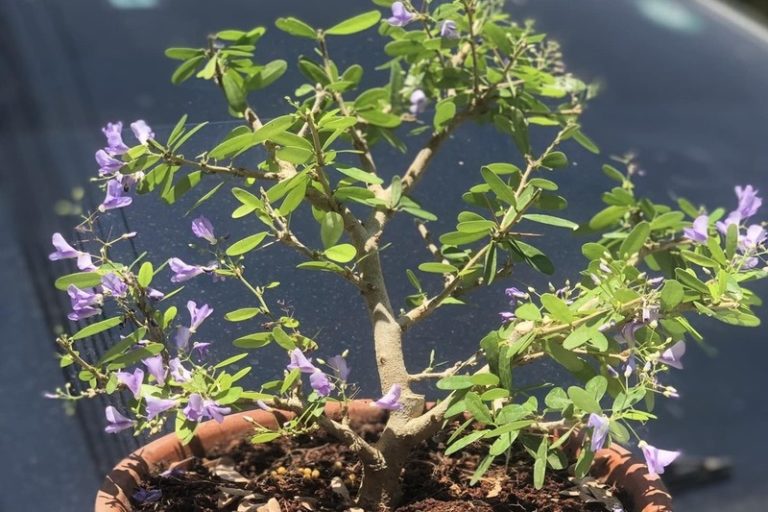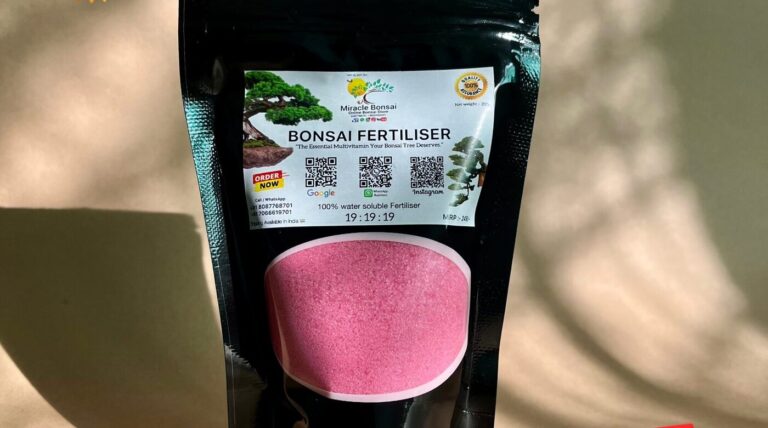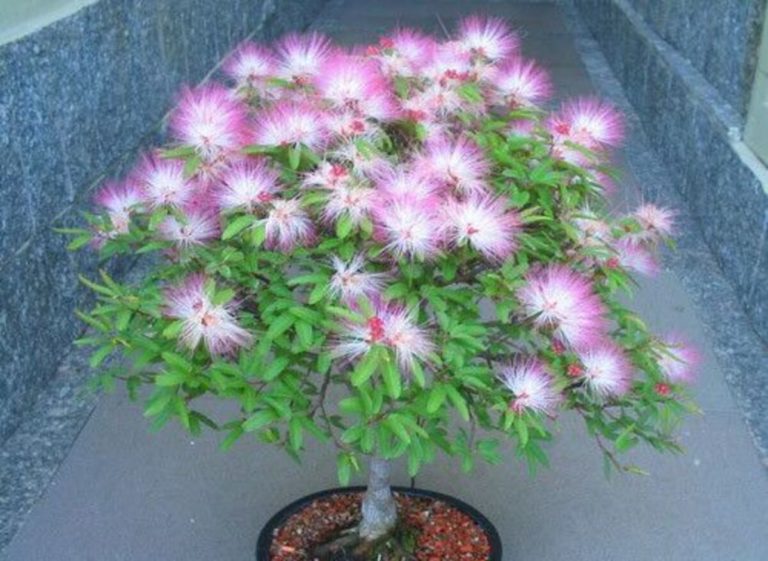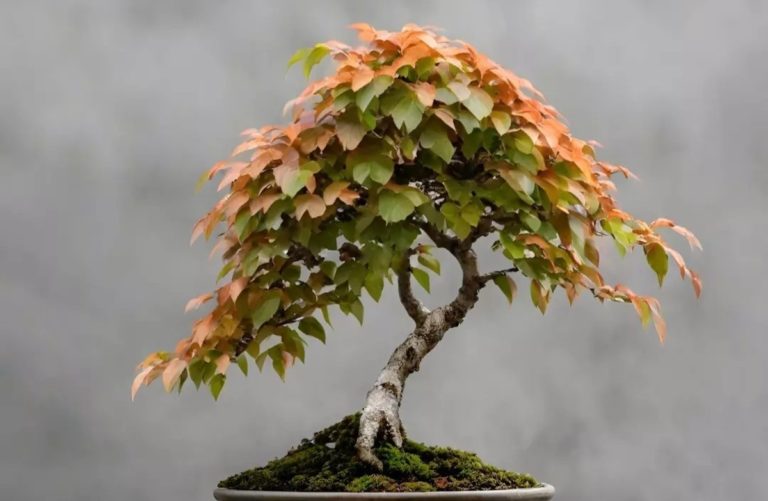Bahama Berry Bonsai: A Tropical Treasure for Bonsai Enthusiasts
The diminutive size and captivating beauty of bonsai trees have captivated the imaginations of people worldwide. The Bahama Berry Bonsai sets out as a distinctive and alluring option among the numerous bonsai varieties. In this article, we will delve into the world of Bahama Berry Bonsai, investigating its characteristics, care requirements, and decorating ideas, which make it an excellent option for both novice and experienced bonsai enthusiasts.
What is a Bahama Berry Bonsai?
A Bahama Berry Bonsai is a beautiful bonsai plant made from a small tree that is grown and trimmed to stay small. It is a unique type of bonsai that came from the Bahamas and has become famous among people who like bonsai. The Bahama Berry Bonsai is known for how pretty it looks. It has bright green leaves and makes small, colorful berries. It looks great in any bonsai collection and is loved for being able to grow in a variety of climates.
History and Origins of the Bahama Berry Bonsai
The Nashia inaguensis, which is the formal name for the Bahama Berry Bonsai, is a plant that comes from the islands of the Bahamas. This tropical evergreen plant is from the Caribbean, especially the island of Inagua. It is in the family Verbenaceae.
The plant was first found and written about on Inagua Island, which is where it got its name. The island’s temperature and dirt have helped this unique type of bonsai grow and develop.
The local people have loved the Bahama Berry Bonsai for generations, not only for its beauty but also for its cooking and medical uses. The small, bright berries that the plant makes are edible and are often used in jams, sauces, and herbal teas. They are known for their sweet and tangy taste.
In recent years, bonsai fans all over the world have become interested in the Bahama Berry Bonsai because of how pretty and flexible it is. Its ability to grow well in different temperatures and its unique look make it a popular choice for bonsai.
The Bahama Berry Bonsai is turned into a beautiful tiny tree through careful care and pruning. It captures the spirit of nature in a small and beautiful way.
This bonsai type is now valued not just for its cultural importance and natural beauty, but also for its capacity to be cultivated and enjoyed in a range of climates across the world. Its interesting history and distinctive qualities continue to attract bonsai aficionados.
Bahama Berry Bonsai and Their Symbolism
The Bahama Berry Bonsai holds symbolic significance in various aspects, reflecting the cultural and natural associations of this unique plant. Here are some symbolic meanings associated with Bahama Berry Bonsai:
Resilience and Adaptability: The Bahama Berry Bonsai comes from the Caribbean and is known for being able to respond to different temperatures and grow well in them. This toughness is a sign of how long-lasting the plant is and how it can change to meet new obstacles. It serves as a warning to stay open and strong when bad things happen.
Connection to Nature: The Bahama Berry Bonsai, like all bonsai trees, represents an appreciation for and commitment to achieving balance with the natural world. These tiny trees are a miniature representation of the natural world at large, highlighting our interdependence with the planet and the importance of appreciating its aesthetics.
Tranquility and Serenity: Bonsai cultivation is often associated with practices of mindfulness and meditation. The gracefulness and calmness of the Bahama Berry Bonsai make it a symbol of peace and harmony. It can be used as a place to reflect and find solace, bringing harmony to the mind and body.
Balance and Harmony: Bonsai artistry involves meticulous shaping and pruning to achieve a sense of balance and harmony between the tree’s branches, trunk, and roots. The Bahama Berry Bonsai, with its carefully crafted form, represents the pursuit of balance and harmony in life. It encourages us to seek equilibrium between different aspects of our lives and strive for a harmonious existence.
Growth and Patience: To grow a Bahama Berry Bonsai, you have to be patient, because the tree needs time and careful care to grow into the shape you want. This image of growth and patience serves as a warning that personal growth and success often take patience, hard work, and a long-term view.
Beauty in Imperfection: Bonsai art embraces the concept of Wabi-sabi, which appreciates the beauty found in imperfections and the transience of life. The Bahama Berry Bonsai, with its unique twists, turns, and irregularities, symbolizes the acceptance of imperfections and the celebration of the beauty of the imperfect and fleeting moments in life.
The symbolic meanings of Bahama Berry Bonsai reflect resilience, adaptability, connection to nature, tranquility, balance, growth, perseverance, and the inherent beauty of flaws. These symbolic associations make the Bahama Berry Bonsai not only an aesthetically appealing plant, but also a profound representation of philosophical and spiritual ideas.
Characteristics of the Bahama Berry Bonsai
The Bahama Berry Bonsai, scientifically known as Nashia inaguensis, possesses several distinctive characteristics that make it a captivating and unique bonsai variety. Here are some notable characteristics of the Bahama Berry Bonsai:
Size and Form: The Bahama Berry Bonsai is a small tree that is grown and cut down to stay small. It grows to about 1 to 2 feet (30 to 60 centimeters) tall when it’s fully grown. The bonsai has been carefully shaped and trained to look elegant and balanced, with a trunk, branches, and leaves that stand out.
Foliage: Throughout the year, the thick, brilliant green foliage of the Bahama Berry Bonsai adds a refreshing and energetic appeal to its overall appearance. Small, oval-shaped leaves are closely packed along the branches, forming a thick canopy of foliage.
Flowers: This bonsai species has tiny, white flowers that bloom in clusters throughout the warmer months, usually from spring to summer. These delicate, fragrant blossoms bring a touch of elegance and beauty to the Bahama Berry Bonsai.
Berries: The Bahama Berry Bonsai’s production of small, colorful berries is one of its most distinguishing characteristics. As they develop, these berries turn from green to red, orange, or yellow. They add a beautiful splash of color and aesthetic appeal to the bonsai, making it stand out among other types.
Tropical Origin: The Bahama Berry Bonsai is from the Caribbean and comes from the Bahamas. It has learned to live in warm and subtropical areas, so it can be grown in places with similar weather.
Drought Tolerance: The Bahama Berry Bonsai exhibits a certain level of drought tolerance, which is an advantage in bonsai care. It can withstand brief periods of dryness, although it is essential to maintain adequate moisture levels to ensure its overall health and vitality.
Medicinal and Culinary Uses: Aside from its aesthetic value, the berries of the Bahama Berry Bonsai have culinary and medicinal purposes. They are edible and can be used in a variety of recipes such as jams, jellies, and teas. Furthermore, the berries are thought to contain antioxidant and anti-inflammatory effects.
Overall, the Bahama Berry Bonsai has aesthetic appeal, compact stature, bright foliage, beautiful berries, and a tropical flare. These characteristics make it an enticing choice for bonsai enthusiasts and add a one-of-a-kind element to any bonsai collection.
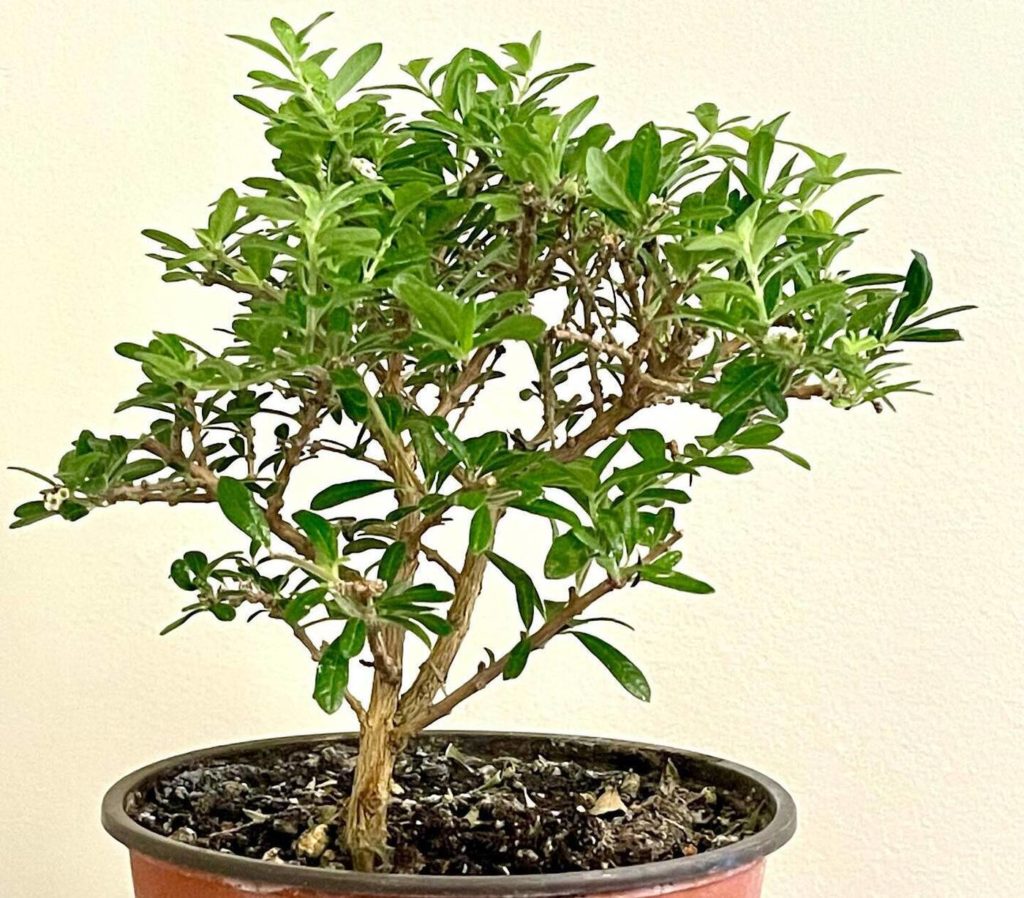
Types of Bahama Berry Bonsai
There is only one known species of Bahama Berry Bonsai, which is Nashia inaguensis. This particular species is native to the Bahamas and has gained popularity as a bonsai tree due to its unique characteristics and adaptability.
While there are no multiple types or varieties of Bahama Berry Bonsai, individual trees might differ somewhat in terms of growth habit, leaf form, and overall look. Environmental variables, production practices, and genetic features within the species can all have an impact on these variances.
How to Grow a Bahama Berry Bonsai
Growing a Bahama Berry Bonsai can be a rewarding and enjoyable experience. Here are some guidelines to help you successfully cultivate and care for your Bahama Berry Bonsai:
1. Selecting a Healthy Tree:
- Choose a young Bahama Berry Bonsai tree from a reputable nursery or bonsai supplier.
- Look for a tree with healthy foliage, a well-developed trunk, and a good root system.
- Ensure that the tree is free from pests or diseases.
2. Providing the Right Growing Conditions:
- Sunlight: Place your Bahama Berry Bonsai in a location that receives bright, indirect sunlight for at least 4-6 hours a day. If growing indoors, place it near a sunny window or provide supplemental grow lights.
- Temperature: The Bahama Berry Bonsai prefers moderate temperatures between 60-80°F (15-27°C). Protect it from extreme heat or cold.
- Humidity: The bonsai benefits from slightly higher humidity levels, especially in drier climates. Mist the leaves occasionally or use a humidity tray to increase moisture around the tree.
3. Potting and Soil:
- Use a well-draining bonsai soil mix, comprising components like Akadama, pumice, and lava rock. Avoid regular potting soil, as it retains too much moisture.
- Repot the Bahama Berry Bonsai every 2-3 years, or when you notice the roots becoming pot-bound. Spring is generally the best time for repotting.
4. Watering:
- Water the Bahama Berry Bonsai thoroughly when the top inch of the soil feels slightly dry.
- Ensure that excess water drains out of the pot, preventing waterlogged conditions.
- Avoid overwatering or allowing the soil to dry out completely, as both can stress the bonsai.
5. Pruning and Shaping:
- Regular pruning is essential to maintain the desired shape and size of the Bahama Berry Bonsai.
- Remove any dead, damaged, or overgrown branches.
- Trim back new growth to maintain a balanced form and encourage branching.
6. Fertilization:
- Feed your Bahama Berry Bonsai with a balanced, slow-release bonsai fertilizer during the growing season (spring to summer).
- Follow the instructions on the fertilizer package for the appropriate dosage.
- Reduce or stop fertilizing during the dormant period in winter.
7. Pests and Diseases:
- Monitor your bonsai for common pests like aphids, spider mites, or scale insects. If detected, treat them with appropriate organic insecticides or horticultural oils.
- Ensure good airflow around the tree to prevent fungal diseases.
8. Winter Care:
- Protect your Bahama Berry Bonsai from frost or freezing temperatures during winter. Move it indoors or provide frost protection if necessary.
- Reduce watering during the dormant period, allowing the soil to dry slightly between watering.
By following these guidelines and providing proper care and attention, you can enjoy the beauty and unique characteristics of your Bahama Berry Bonsai as it grows and thrives over time.
Benefits of the Bahama Berry Bonsai
The Bahama Berry Bonsai (Nashia inaguensis) offers several benefits to bonsai enthusiasts and those who appreciate its unique qualities. Here are some key benefits of cultivating and enjoying a Bahama Berry Bonsai:
Aesthetically Pleasing: The Bahama Berry Bonsai possesses a charming and eye-catching appearance. Its lush green foliage, delicate flowers, and colorful berries make it a visually appealing addition to any bonsai collection or indoor space.
Compact Size: As a compact bonsai tree, the Bahama Berry Bonsai is ideal for individuals with limited space, as it can be grown both indoors and outdoors. Its diminutive size makes positioning on a windowsill, workstation, or patio simple.
Adaptability: The Bahama Berry Bonsai is renowned for its climate adaptability. It is able to flourish in tropical and subtropical regions, as well as interior environments that are carefully managed. This adaptability allows bonsai devotees from diverse geographic locations to cultivate this variety.
Culinary and Medicinal Uses: The Bahama Berry Bonsai produces visually appealing and tasty flowers. They may be used to make jams, jellies, drinks, and a variety of other dishes. The berries are well-known for their sweet and sour flavor, as well as their antioxidant and anti-inflammatory effects.
Relaxation and Mindfulness: Caring for a Bahama Berry Bonsai can provide a sense of relaxation and mindfulness. The process of pruning, shaping, and nurturing the bonsai requires patience and focus, allowing individuals to connect with nature and find a peaceful escape from daily stresses.
Symbolism and Meaning: Like other bonsai trees, the Bahama Berry Bonsai holds symbolic significance. It represents resilience, adaptability, balance, and growth, serving as a reminder of the beauty and interconnectedness of nature. Displaying and caring for this bonsai can provide a deeper connection to nature and a source of inspiration.
Educational Value: Cultivating a Bahama Berry Bonsai allows you to learn about horticulture, bonsai methods, and Bahamas natural history. It helps people to learn more about plants, habitats, and the art of bonsai gardening.
Overall, the Bahama Berry Bonsai is an eye-catching, small, and versatile bonsai alternative. Its culinary applications, symbolism, and relaxing potential make it a lovely and gratifying plant to cultivate and enjoy.
Displaying Bahama Berry Bonsai
Putting up a display of a Bahama Berry Bonsai (Nashia inaguensis) is a fun and creative component of bonsai cultivation. Here are some pointers to help you present your Bahama Berry Bonsai in an appealing and harmonious manner:
1. Choice of Display Stand or Pot:
Choose a display stand or pot that matches the size and style of your Bahama Berry Bonsai. Consider the overall design and material of the stand or pot to ensure it complements the bonsai’s aesthetic attractiveness. Traditional ceramic pots or wooden supports frequently complement the natural beauty of the Bahama Berry Bonsai.
2. Placement:
Choose an appropriate location to display your Bahama Berry Bonsai, considering factors such as lighting, temperature, and aesthetics:
- Lighting: Place the bonsai in a place that receives indirect sunlight. This allows the foliage to grow while shielding it from the extreme heat.
- Temperature: Ensure the temperature in the display area remains within the preferred range for the Bahama Berry Bonsai (60-80°F or 15-27°C).
- Aesthetics: Consider the overall composition and harmony of your display area. Choose a spot that allows the bonsai to be the focal point while complementing the surrounding décor.
3. Display Techniques:
- Balance and Proportion: Maintain a sense of balance and proportion between the size of the bonsai, the display stand or pot, and any accent elements. This ensures a visually pleasing and harmonious arrangement.
- Negative Space: Incorporate negative space around the bonsai to highlight its form and create a sense of tranquility. Avoid overcrowding the display area with too many objects or distractions.
- Height and Layering: Use various techniques, such as placing the bonsai at different heights or incorporating rocks or moss, to create depth and dimension in the display. This adds visual interest and captures the essence of a natural landscape.
4. Seasonal Considerations:
- Adjust the display according to the changing seasons. For example, you can decorate the display with small seasonal ornaments, miniature figurines, or subtle seasonal colors to reflect the time of year.
- Take care to not overwhelm the bonsai with excessive decorations, allowing the beauty of the tree to remain the focal point.
5. Regular Maintenance:
- Keep the display area clean and free from dust or debris. Wipe the leaves of the Bahama Berry Bonsai gently with a soft cloth or brush to maintain their vibrancy.
- Trim and prune the bonsai regularly to maintain its desired shape and size. Remove any dead or unhealthy foliage to keep the tree looking its best.
Remember, displaying a Bahama Berry Bonsai is an opportunity to showcase its natural beauty while adding your own artistic touch. Experiment with different display options and techniques to create a visually captivating and harmonious arrangement that brings joy and appreciation to your bonsai collection.
Styling and Design of a Bahama Berry Bonsai
When it comes to styling and designing a Bahama Berry Bonsai (Nashia inaguensis), there are various approaches you can take to enhance its natural beauty and create an aesthetically pleasing composition. Here are some styling and design tips for your Bahama Berry Bonsai:
1. Choose a Bonsai Style:
- Formal Upright: This style features a straight, upright trunk tapering gradually from the base to the apex.
- Informal Upright: It showcases a slightly curved trunk, creating a more organic and natural appearance.
- Slanting: The trunk of the bonsai is inclined at an angle, adding a dynamic and visually appealing element.
- Cascade: This style represents a tree growing on a slope, with the trunk cascading downward, creating a sense of movement and drama.
- Semi-Cascade: Similar to the cascade style, but with the trunk partially cascading while still retaining an upright element.
2. Trunk Development and Branching:
- Encourage the development of a thick, well-tapered trunk by allowing the main trunk to grow freely and pruning the side branches accordingly.
- Create a balanced branch structure by selecting and positioning primary, secondary, and tertiary branches that radiate from the trunk in a visually appealing manner.
- Use wiring techniques to shape and position the branches, taking care not to damage or constrict their growth.
3. Branch Placement and Foliage Pads:
- Aim for a well-balanced distribution of branches, both horizontally and vertically, to create a visually pleasing silhouette.
- Utilize techniques such as pruning and wiring to guide the growth and placement of branches.
- Group foliage pads to create depth and layers, ensuring that each pad is well-defined and contributes to the overall composition.
4. Proportions and Scale:
- Maintain appropriate proportions and scale between the trunk, branches, and foliage. A well-proportioned bonsai creates a sense of harmony and visual appeal.
- Consider the size of the pot or display stand in relation to the bonsai to ensure a balanced and cohesive composition.
5. Natural Elements and Accents:
- Enhance the natural aesthetics of the Bahama Berry Bonsai by incorporating elements such as rocks, moss, or small figurines to create a miniature landscape effect.
- Select accents that complement the overall design and style of the bonsai, adding visual interest without overpowering the tree itself.
6. Continual Care and Refinement:
- Regularly trim and shape the branches and foliage to maintain the desired design and prevent overgrowth.
- Monitor the health of the bonsai, ensuring proper watering, fertilization, and protection against pests and diseases.
- As the bonsai grows and matures, continue refining its shape and design by carefully pruning and wiring new growth.
Remember that styling and creating a Bahama Berry Bonsai is an ongoing process that takes patience and artistic expression. Allow the tree to grow and change over time, making changes and improvements as needed to get the look you want. Enjoy the process of making a tree that is unique and interesting and shows how you see the world and appreciate its beauty.
How to Care for and Maintain a Bahama Berry Bonsai
Caring for and maintaining a Bahama Berry Bonsai (Nashia inaguensis) is essential to ensure its health, vitality, and longevity. Here are some important care guidelines to follow:
1. Watering:
- Regularly monitor the moisture level of the soil. Water the bonsai when the top inch of the soil feels slightly dry.
- Ensure thorough watering, allowing water to penetrate the entire root system. Avoid overwatering, as it can lead to root rot.
- Use a watering can with a fine rose or a misting spray bottle to water the bonsai gently, preventing soil disturbance.
2. Sunlight:
- Place the Bahama Berry Bonsai in a location that receives bright, indirect sunlight for at least 4-6 hours a day.
- If growing indoors, position the bonsai near a sunny window or use supplemental grow lights to provide adequate light.
3. Temperature and Humidity:
- The Bahama Berry Bonsai prefers moderate temperatures between 60-80°F (15-27°C).
- Protect the bonsai from extreme heat or cold, as it can stress the tree.
- Provide slightly higher humidity levels, especially in drier climates, by misting the leaves or using a humidity tray.
4. Soil and Repotting:
- Use a well-draining bonsai soil mix that consists of components like Akadama, pumice, and lava rock. Avoid regular potting soil.
- Repot the Bahama Berry Bonsai every 2-3 years or when you notice the roots becoming pot-bound. Spring is generally the best time for repotting.
5. Pruning and Shaping:
- Regular pruning is necessary to maintain the desired shape and size of the bonsai.
- Remove any dead, damaged, or overgrown branches with clean, sharp pruning shears.
- Trim back new growth to encourage branching and maintain the bonsai’s desired silhouette.
6. Fertilization:
- Feed your Bahama Berry Bonsai with a balanced, slow-release bonsai fertilizer during the growing season (spring to summer).
- Follow the instructions on the fertilizer package for the appropriate dosage. Avoid over-fertilizing, as it can harm the tree.
7. Pest and Disease Control:
- Regularly inspect the bonsai for pests such as aphids, spider mites, or scale insects. Treat any infestations promptly using appropriate organic insecticides or horticultural oils.
- Ensure good airflow around the tree to prevent the occurrence of fungal diseases.
8. Winter Care:
- Protect the Bahama Berry Bonsai from frost or freezing temperatures during winter. Move it indoors or provide frost protection if necessary.
- Reduce watering during the dormant period, allowing the soil to dry slightly between waterings.
9. Observing and Monitoring:
- Regularly observe the health and condition of the bonsai, including the leaves, branches, and overall growth.
- Address any issues promptly, such as yellowing leaves, wilting, or signs of pests, to prevent further damage and maintain the bonsai’s health.
By following these care guidelines and giving your Bahama Berry Bonsai the attention it needs, you can ensure its well-being and enjoy its beauty for years to come. Remember that each bonsai is unique, so observe your tree’s specific requirements and adjust your care practices accordingly.
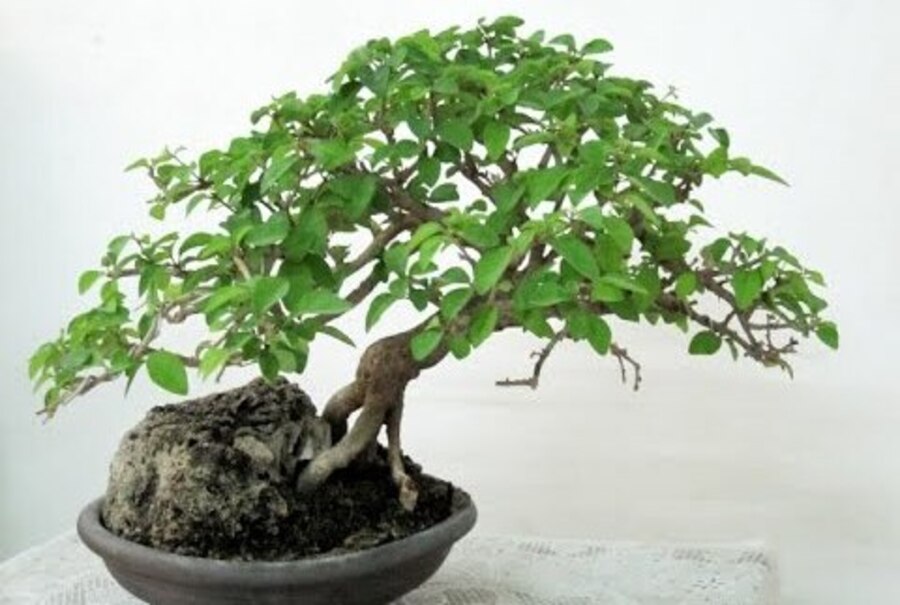
Bahama Berry Bonsai Care Sheet
| Aspect | Care Tips |
| Watering | Check the top inch of soil; water when slightly dry. |
| Ensure thorough watering, avoiding overwatering and waterlogging. | |
| Sunlight | Place in bright, indirect sunlight for 4-6 hours daily. |
| Provide supplemental grow lights if growing indoors. | |
| Temperature | Maintain temperatures between 60-80°F (15-27°C). |
| Protect from extreme heat or cold. | |
| Humidity | Increase humidity with misting or a humidity tray. |
| Fertilization | Use a balanced, slow-release bonsai fertilizer during the growing season. |
| Follow package instructions for dosage. | |
| Pruning and Trimming | Regularly prune to maintain shape and remove dead or overgrown branches. |
| Wiring and Styling | Use wiring techniques to shape branches, taking care not to damage them. |
| Repotting | Repot every 2-3 years using well-draining bonsai soil mix. |
| Repot in spring, ensuring roots are not pot-bound. | |
| Pest and Disease Control | Regularly inspect for pests and treat infestations promptly. |
| Maintain good airflow and address fungal diseases immediately. | |
| Winter Care | Protect from frost or freezing temperatures. |
| Move indoors or provide frost protection if necessary. | |
| Regular Maintenance | Observe health and condition regularly, addressing any issues promptly. |
| Adjust care practices based on the specific needs of the bonsai. |
Remember to tailor your care routine based on the specific needs of your Bahama Berry Bonsai and consider factors such as the climate in your location and the stage of growth of your bonsai. Regular monitoring and attentive care will help keep your bonsai healthy and thriving.
Conclusion
The Bahama Berry Bonsai (Nashia inaguensis) is an interesting and beautiful plant with cultural and symbolic meanings. It needs the right amount of water, sunlight, temperature, humidity, fertilizer, trimming, wiring, repotting, pest control, winter care, and regular upkeep.
Bonsai fans can make sure their Bahama Berry Bonsai is healthy and alive by following these care instructions. The bonsai has more benefits than just how it looks. It can be used in cooking and it may help you relax. By taking care of a Bahama Berry Bonsai, people can connect with nature and find motivation while reaping the benefits of caring for a beautiful bonsai.
FAQ:
Q: What is a Bahama Berry Bonsai?
A: The Bahama Berry Bonsai, which is called Nashia inaguensis in the science world, is a small bonsai tree from the Bahamas. It is prized for its thick leaves, white flowers, and red berries that can be eaten. Bonsai is known for being hardy and is a popular choice among people who like to grow them.
Q: How often should I water my Bahama Berry Bonsai?
A: Water your Bahama Berry Bonsai when the top inch of soil feels slightly dry. Ensure thorough watering, allowing the water to penetrate the entire root system. Avoid overwatering to prevent root rot.
Q: What is the ideal location for my Bahama Berry Bonsai?
A: Place your Bahama Berry Bonsai in a well-lit area that receives bright, indirect sunlight for about 4-6 hours a day. If growing indoors, position it near a sunny window or use supplemental grow lights to provide adequate light.
Q: How do I prune my Bahama Berry Bonsai?
A: Regular pruning is necessary to maintain the shape and size of your Bahama Berry Bonsai. Use clean, sharp pruning shears to remove any dead, damaged, or overgrown branches. Trim back new growth to encourage branching and maintain the desired silhouette.
Q: When should I repot my Bahama Berry Bonsai?
A: Repot your Bahama Berry Bonsai every 2-3 years or when you notice the roots becoming pot-bound. The best time for repotting is in spring when the tree is actively growing. Use a well-draining bonsai soil mix and ensure that the roots are not excessively trimmed during the repotting process.
Q: How do I protect my Bahama Berry Bonsai during winter?
A: Protect your Bahama Berry Bonsai from frost or freezing temperatures during winter. Move it indoors to a location with adequate light or provide frost protection by covering it with a frost cloth or placing it in a sheltered area.
Q: Can I eat the red berries of the Bahama Berry Bonsai?
A: Yes, you can eat the red berries on the Bahama Berry Bonsai. They have a sour taste and can be used to make jams, sauces, and cakes, among other things..
Q: How tall does a Bahama Berry Bonsai typically grow?
A: A Bahama Berry Bonsai can reach a height of around 1 to 2 feet (30 to 60 centimeters) when fully grown. However, with regular pruning and shaping, you can maintain it at a desired height.
Q: How long does it take for a Bahama Berry Bonsai to produce berries?
A: It can take several years for a Bahama Berry Bonsai to reach maturity and produce berries. Typically, it may take around 3 to 5 years before the bonsai begins to bear fruits.
Q: Are Bahama Berry Bonsai trees susceptible to any specific pests or diseases?
A: Bahama Berry Common bonsai bugs like aphids, spider mites, and scale insects can attack bonsai trees. Infestations can be controlled and stopped by checking for them regularly and treating them quickly with organic poisons or garden oils. Fungal diseases can also be stopped by making sure plants get enough air and water.
Q: Can I wire and style the branches of my Bahama Berry Bonsai?
A:Yes, you can use wires and style to change the shape of your Bahama Berry Bonsai’s branches. But when wiring, you should be careful not to damage or squeeze the branches. As the bonsai grows, it may need regular care and changes to stay in the right shape.
Also Read:



